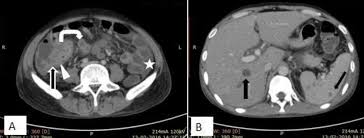By C.M. Boger, M.D.
The Baptisia patient shows that he is laboring under the influence of an intense and rapidly acting, systemic infection, which exalts and then depresses the sensibilities, ending by disorganizing the blood. The trend of the Baptisia sickness is toward a typhoid state. It moves toward malignancy with a rapid pace, and is peculiarly suitable for sicknesses which quickly prostrate the patient; grippe, typhoid fever, fulminating fevers and malignant diphtheria are good examples.
The stage of excitement is ushered in by chills going up and down the back alternating with an intense, burning heat of the whole body, except the feet, which are cold. The heat is so distressing that the victim instinctively seeks a cool place in the bed or goes to the open window for relief; even the air of the room seems hot and oppressive. At the same time a peculiar, general, bruised, muscular soreness come on and causes restlessness, the softest bed seems too hard, it even extends to the eyeballs, they turn red, feel bruised and pain when moved.
After awhile the fever becomes continuous, causing the face to flush a purplish red, and it looks and feels besotted. At first this only amounts to an undefined wild feeling, but very soon passes into a wandering delirium in which the victim laboriously gathers together various imaginary, scattered objects or has illusions that parts of his body are too large or are separated from the rest, and he vainly tries to replace them. Sometimes this sense of duality is uppermost, and he imagines his body or a part thereof to be double. (Anac., Lach., Phos., Stram.)
In fully developed cases, the temperature runs high, prostration increases,the delirium passes into stupor, and fetor begins to show itself. Probably the earliest sign of this is the filthy taste of which the patient complains, but bleeding from the nose or gums soon follows, and a little later the mouth is filled with offensive. Tenacious mucus, a brown stripe forms down the center of the tongue (Arn., Phos., Verat. Vir.), and sordes are seen on the teeth.
Great fetor is one of the ear-marks of decomposition as well as a great indicator for Baptisia. Not only is there a bad odor from the mouth, but the stool smells putrid, and the whole body emits an unwholesome emanation. It encourages putrid decomposition whatever the disease may be. The menstrual blood in chocolate brown and offensive (Bry.).
The purplish hue of the face is part and parcel of what may be seen elsewhere. Under certain circumstances the mucous membrane looks dark, at other times fleeting, livid discolorations are seen in various parts of the skin.
Most of the pains are of an aching, bruised character, and are more intense in the occiput and along the back; on the other hand, perversions of sensation are more marked in the extremities. This is particularly true of the early stages of acute disease; when they become well established Baptisia cases are very apt to tend toward insensibility and painlessness (Opium) combined with sluggish mental operations or stupor. Painless, blue ulcers (Opium).
It has developed pains in the region of the gall bladder very similar to those of Leptandra and Dioscorea. Other things being equal, we should prefer it to the latter when symptoms of biliary intoxication appear.
In rachialgic pains it should be compared with Phytolacca and Variolinum. Baptisia, Aconite or Veratrum viride are sometimes used merely to reduce very high temperatures. This is not strictly homoeopathic, although it may occasionally be useful.



